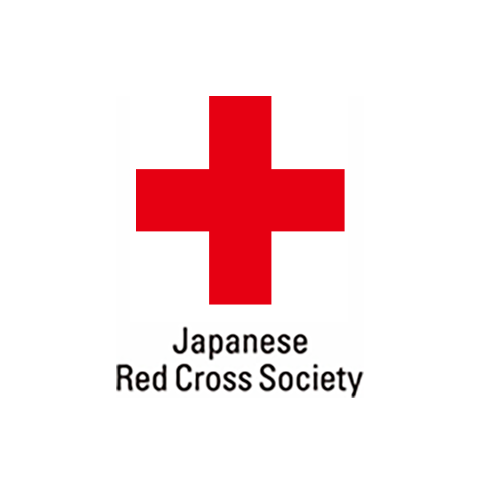Special Interview "AED Promotion Is My Lifework." Yuji Kuroiwa, Governor of Kanagawa Prefecture, Chief of Kanagawa Prefecture Branch of the Japanese Red Cross Society

JRCS Basic Life Support Video
Governor Yuji Kuroiwa, Chief of Kanagawa Prefectural Chapter of the Japanese Red Cross Society (JRCS), has been promoting emergency medical care since he was a newscaster of Fuji Television Network, Inc.. He continues in his efforts to promote AEDs. We interviewed Governor Kuroiwa about his enthusiasm for emergency medical care and what JRCS should be.
Kanagawa Prefecture announced a "Kanagawa AED Declaration" on June 11, 2016. It's aim is for all residents of Kanagawa Prefecture to recognize and be familiar with AEDs and addresses three key points: "to know" what an AED is, "to learn" how it is used and "to remember" where it is installed.
A fire extinguisher can bring a fire under control when it is used immediately after the fire breaks out. The same is true for an AED. An AED may save a life when it is used immediately after a person falls unconscious. "Kanagawa AED Declaration" aims at setting up an environment where citizens can help each other at the scene where emergency medical care is needed.
First AED Introduction in Japan
I actually introduced AEDs for the first time through the mass media in Japan. When I was a newscaster on a news program of Fuji Television Network, Inc., "FNN Super Time", I tackled emergency medical care in campaign programs for two years around 1989. I covered AED use in a special program featuring emergency medical care and continued coverage even after the campaign. I emphasized "AED promotion as devices delivering electric shocks in cases of cardiopulmonary arrest and noted that they have become very compact and should be available in more places."
I introduced AEDs through the mass media and am now engaged in AED promotion as a governor. My position has changed but my attitude has not. I will promote something good but help stop something bad. While a journalist only proposes actions from the outside, a governor can enforce them from the inside. Issues threatening human life are my lifework. I will do everything as quickly as possible.
All prefectural school teachers have already taken AED training courses and all prefectural government staff will soon complete them. From now on, I will encourage all prefectural residents to take these courses. I believe my mission is to set up an environment where every life can be saved.
To save lives of others around you
During the campaign I always emphasized programs for emergency medical care "It is essential to allow rescue crews to conduct medical practices on the spot." At that time, the Medical Practitioners Act prohibited medical practices by those other than medical doctors and rescue crews were not able to save threatened lives. As a result of these campaign programs, a national qualification of emergency life-saving technicians was created and now they can conduct advanced life support on the spot and in the ambulance.
However, saving more lives is not good enough. It is essential for a citizen facing a collapsed person to conduct basic life support. The programs covered an AED training course of JRCS, the Japanese Red Cross, and conveyed the importance and significance for citizens to learn cardiopulmonary resuscitation.
To learn first aid leads to risk management for large-scale disasters. After the Great East Japan Earthquake and the Kumamoto Earthquake, awareness was raised for many people about disaster prevention. To learn first aid is one such preparation. "Self-help, mutual help and public help" respond to disasters. The first aid manual is filled with skills and knowledge to utilize "mutual help" to save the lives of others who survived by "self-help".
You can learn how to use an AED in a JRCS training course and as a short course has been recently established, you can access it more easily. We hope many people will take the training courses.
Governor Kuroiwa is demonstrating basic life support at a blood donor drive venue.
To be a life protector, training contents are revised in July
Approximately 25,000 citizens found people with cardio-respiratory arrest of cardiovascular causes in 2014. Survival rates largely vary based on the presence of cardiopulmonary resuscitation (shown on the right). An ambulance arrives on the scene in 8.6 minutes on average. Please learn accurate knowledge and skills and act with confidence and courage.
Notification of first aid training courses
First aid training courses are held at each prefectural branch office as needed. Since July this year, the training courses have included case studies for the scene and have been more accessible and practical. Please contact a JRCS branch near your home. If you can't wait for the next training course or you would like to prepare for or review the training course, please visit the JRCS site below and watch the video. You can easily find the site by searching with the term, JRCS Basic Life Support Video.
http://www.jrc.or.jp/activity/study/safety/
Newsletter, July 2016 by JRCS




